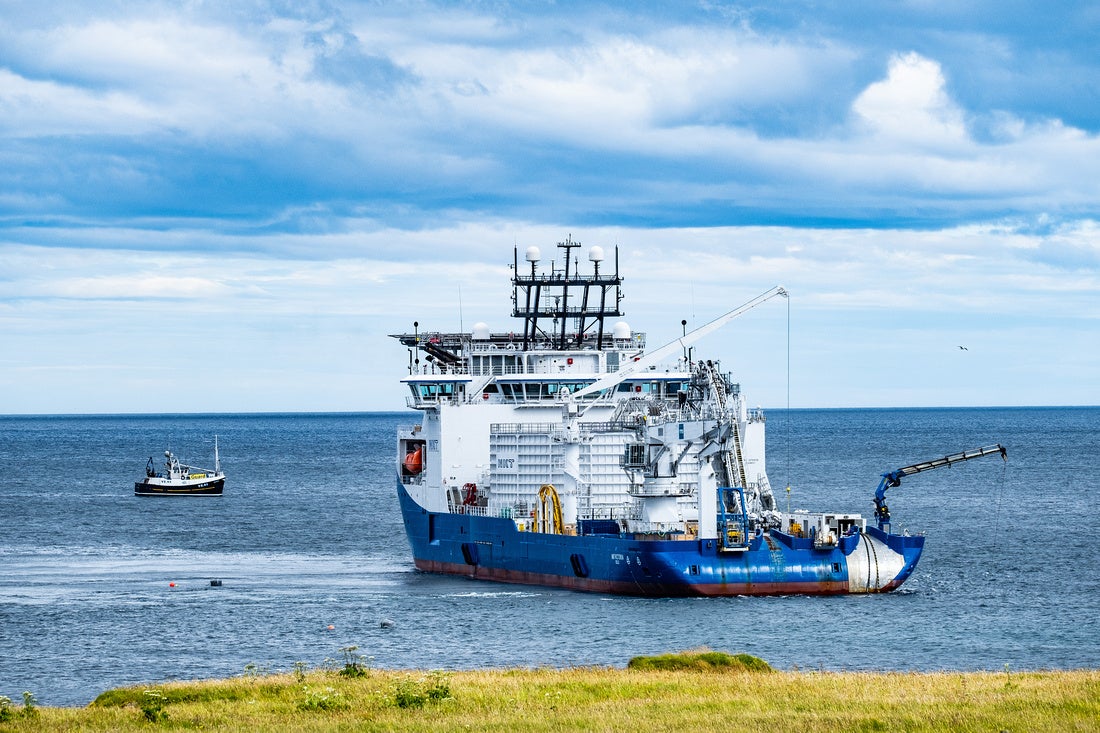First subsea cables laid in £660m project to connect Shetland to energy grid
The first phase of the project will see 100km laid from Noss Head in Caithness to the east of the Orkney Islands.

Your support helps us to tell the story
From reproductive rights to climate change to Big Tech, The Independent is on the ground when the story is developing. Whether it's investigating the financials of Elon Musk's pro-Trump PAC or producing our latest documentary, 'The A Word', which shines a light on the American women fighting for reproductive rights, we know how important it is to parse out the facts from the messaging.
At such a critical moment in US history, we need reporters on the ground. Your donation allows us to keep sending journalists to speak to both sides of the story.
The Independent is trusted by Americans across the entire political spectrum. And unlike many other quality news outlets, we choose not to lock Americans out of our reporting and analysis with paywalls. We believe quality journalism should be available to everyone, paid for by those who can afford it.
Your support makes all the difference.A £660 million project which will connect Shetland to the main British energy system for the first time has passed a major milestone.
Scottish and Southern Electricity Networks (SSEN) announced the first phase of cable-laying as part of the Shetland High-Voltage Direct Current (HVDC) Link is now under way off the coast of Caithness.
When completed, the subsea cable will connect Shetland to the UK energy system, in a move which will provide security of supply for islanders but will also benefit renewable energy projects in and around the islands.
The specialist vessel NKT Victoria has begun laying the first 100km of cable on the seabed – work which is expected to be completed by the middle of July.
This is taking place after boulders were moved from the cable route to create a clear pathway for its installation.
Once the cable is in place on the seabed, a construction support ship equipped with a specialist subsea jet trencher will ensure it is buried at the correct depth – with rocks used to protect the cabling in areas where this trenching process is not possible.
The first phase of the project will see cable laid from Noss Head in Caithness to a point to the east of the Orkney Islands.
The second phase of cabling, which is expected to start in March, will see 57km of cable laid heading south from Weisdale Voe on Shetland.
The third phase, due to take place later in 2023, will then see further cables laid to link these, creating the full 260km subsea HVDC link.
SSEN Transmission lead project manager Chris Finnigan said: “We are delighted that specialist cable-laying vessel NKT Victoria has begun this major milestone in kicking off the first subsea cable installation campaign on the Shetland HVDC link.
“The installation of the subsea cable is one of the major components of the Shetland HVDC link project, and it marks an exciting step in the project for SSEN Transmission and our contractors, and we look forward to the completion of this first subsea cable campaign over the coming weeks.”